A few mountain sculptures in the Midwest pay tribute to both a legendary warrior and a person who engraved this legacy in the stone the same way as Crazy Horse Memorial does.
Last updated: March 24, 2025
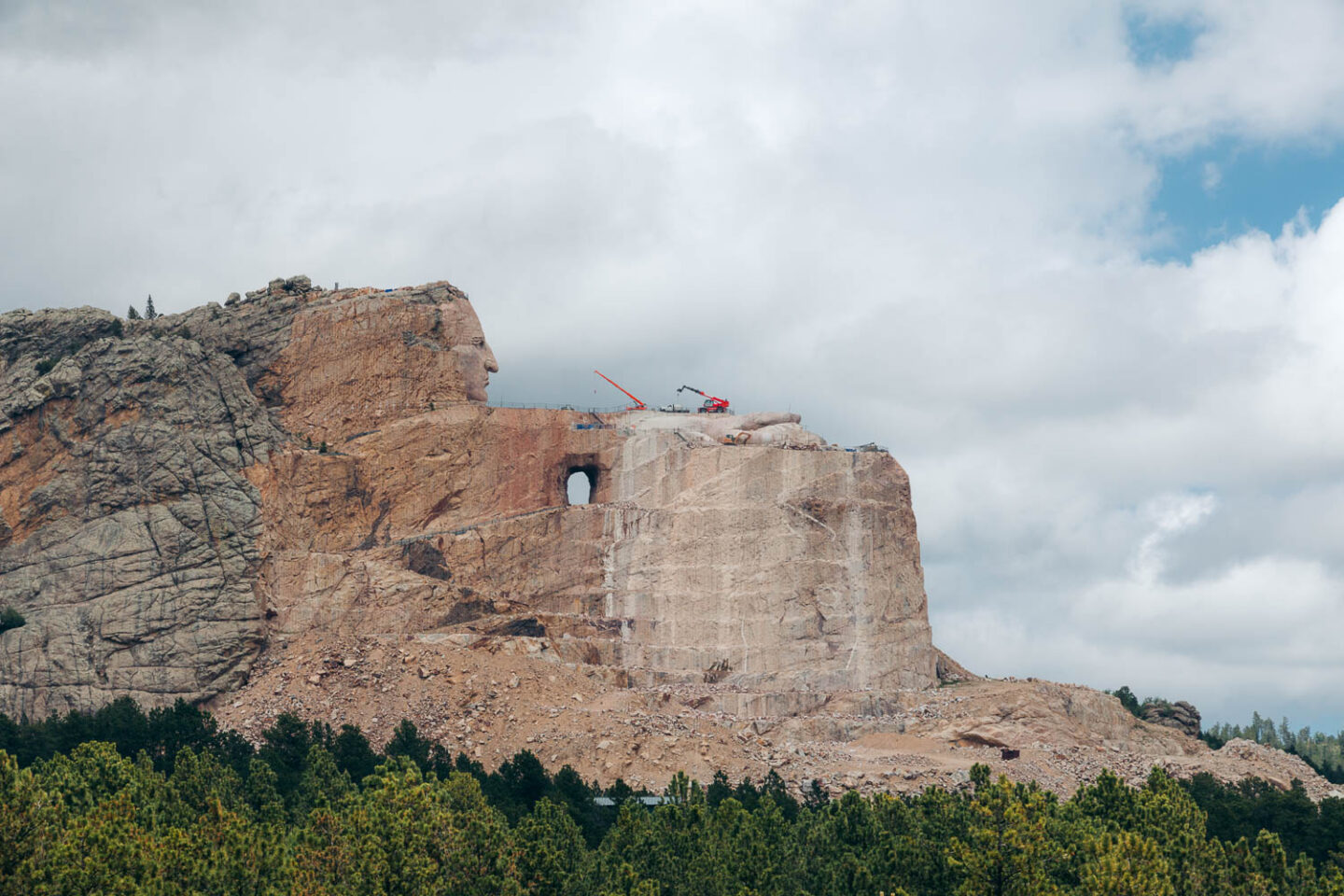
Crazy Horse Memorial – A Mountain Carving with Spirit and Soul
It all started with one man. Born around 1840 near Rapid Creek on the edge of the Black Hills in South Dakota, the future Lakota Sioux leader was raised in the traditional ways of his people. From an early age, the boy was trained as a warrior for the tribe. His father, known as Crazy Horse, was a member of the Oglala Band of the Lakota Sioux.
But the boy had to earn his father’s name. He started out as Curly. His long, wavy hair probably played a direct role in getting this temporary name. After proving himself in the battles, the young Lakota finally earned to be called “Crazy Horse” (“His horse is crazy”).
The Lakota warrior was fearsome in the battles and protective of his tribe. Never willing to surrender to newcomers that were stealing his land and suppressing his people, Crazy Horse fought to preserve Native American territory and the traditional way of life of the Lakota people.
Battle of the Little Bighorn
In 1876 in the battle known as the Battle of the Little Bighorn, he led a band of warriors. Once again the man proved himself, earning great respect from both his people and his enemies. Many Native Americans look on that battle as a victory over a much larger army. After the battle, the U.S. government rounded up Northern Plains’ tribes that withstood the ruling power.
The Lakota people continued to resist. In 1877 under the Flag of truce, Crazy Horse went to Fort Robinson, Nebraska. Negotiation broke down. As Crazy Horse was taken to jail, he resisted and drew out his knife. One of the military guards fatally wounded him.
Crazy Horse’s parents transported their son’s body and buried it in a sacred place the exact location of which remains a secret to this day.
Artist of Crazy Horse Memorial
Sculptor Korczak Ziolkowski was born in Boston into a family of Polish immigrants. Exposed to the harshness of life from an early age, Korczak taught himself everything he knew about sculpting. His dedication to the art and work ethic was recognized at the 1939 World’s Fair.
Around this time, the prominent sculptor attracted the attention of Chief Henry Standing Bear who invited Korscak to the Black Hills to carve the world’s biggest mountain sculpture. The Lakota elders knew who they wanted to be the subject of the grand Monument, Lakota warrior Crazy Horse.
The fact that Korczak was born on September 6, within hours of the date Crazy Horse had died 31 years earlier, further convinced them that the sculptor was destined to carve Crazy Horse
After much consideration, Korczak accepted the offer and dedicated the rest of his life to Crazy Horse Memorial.
Initially the sculptor wanted to carve the Monument elsewhere, but the Lakota elders insisted it would be in the Black Hills, a place sacred to them for many generations. A 600-foot mountain was chosen. Both Korczak and Chief Henry Standing Bear agreed that the entire mountain would be needed to tell the story about dedication and spirit of the Lakota people.
Once finished, Crazy Horse Monument would be 641 feet long and 563 feet high. The project was grand. It would surpass in size even the world-famous heads of four American presidents at Mount Rushmore, each of which is 60 feet high.
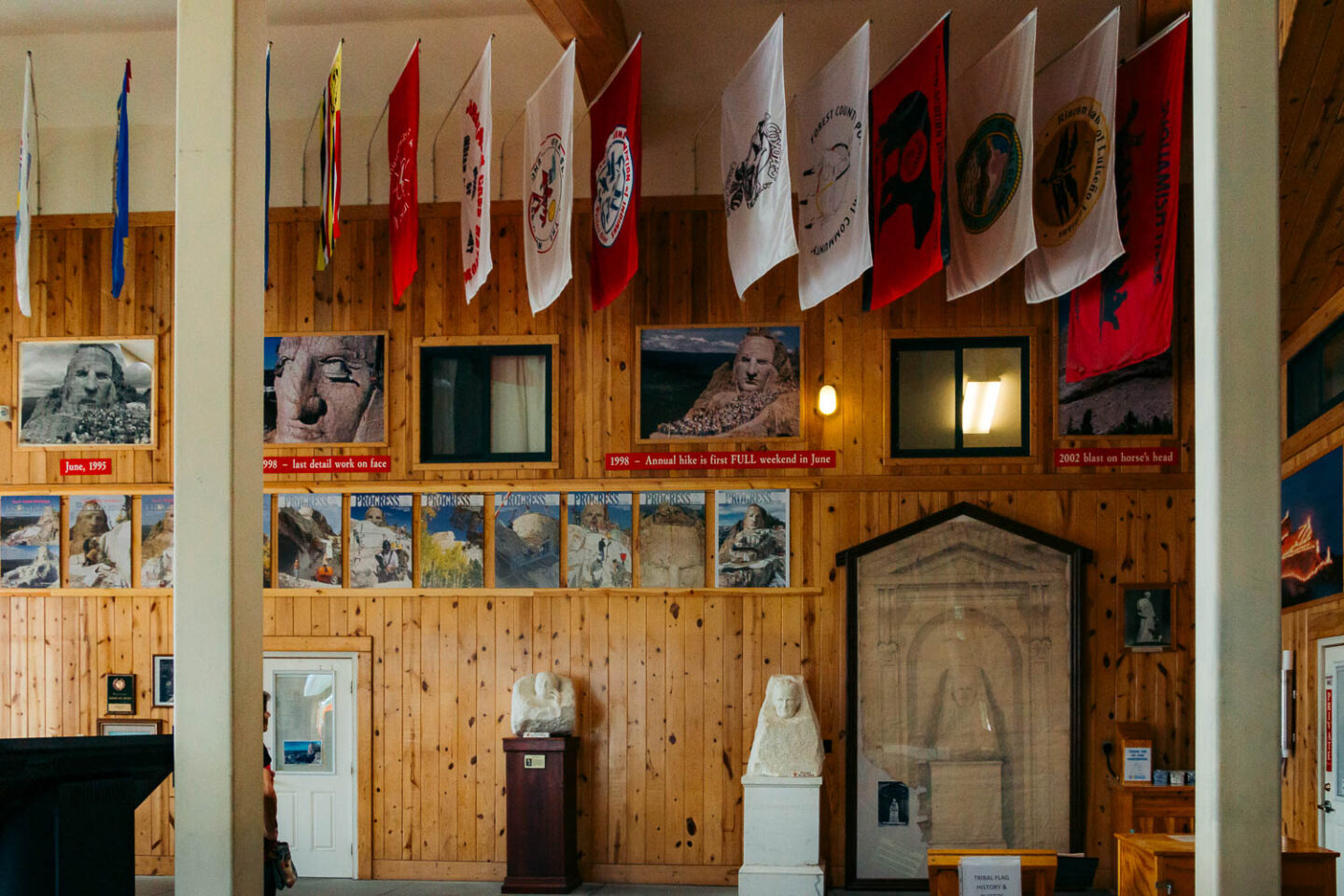
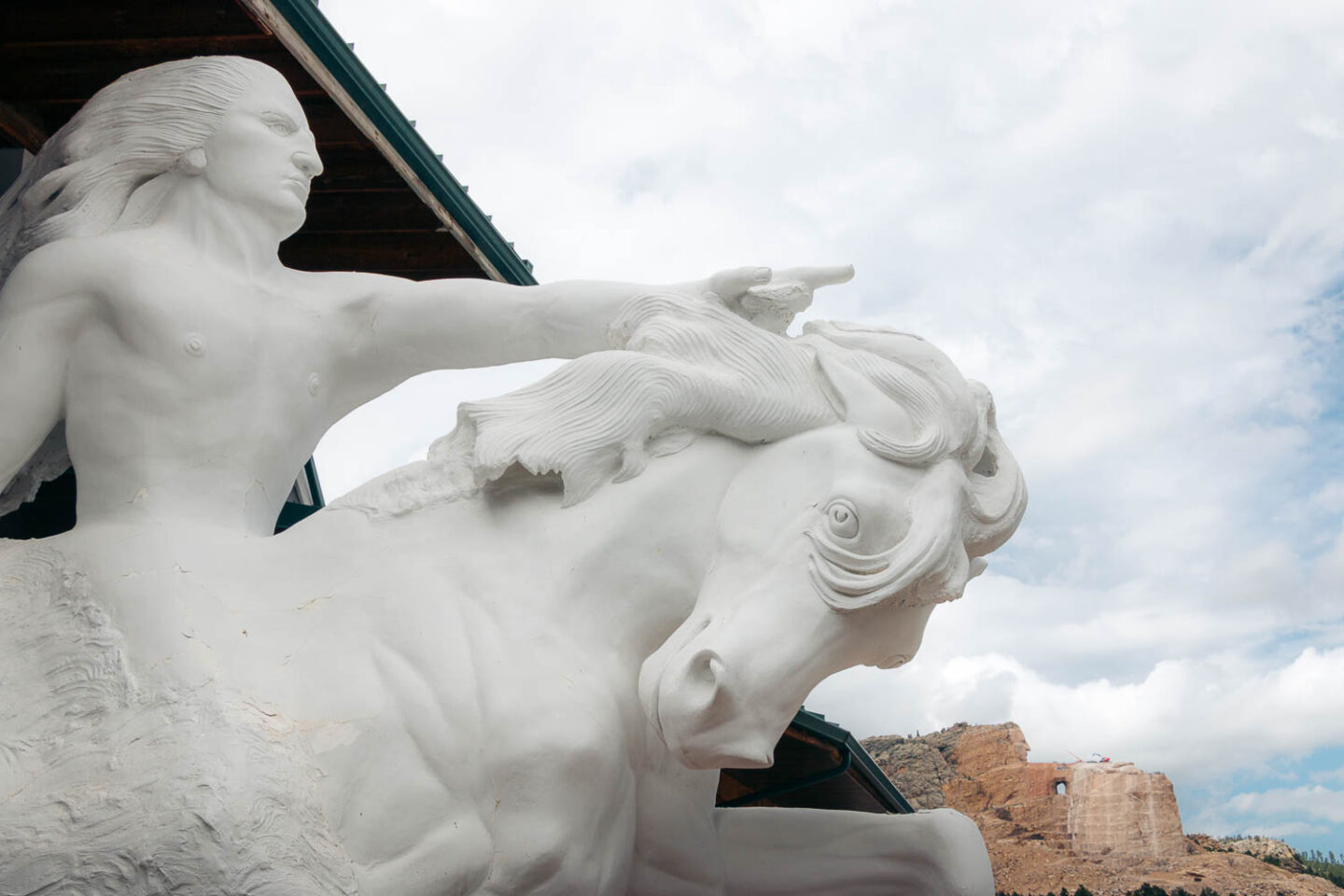
Work Begins on the Mountain
The sculptor knew he would not live to see the finished product of this carving. Money also was limited. Neither Korczak nor the Lakota elders accepted government support. The sculptor knew had they taken any funds, the government would have had the control over the whole project.
Other obstacles were the untamed nature of the Black Hills. When Korczak moved to the area in 1946, there was no electricity, no water, no roads, no place to live. Just the land and trees…
For 7 months the father of Crazy Horse Memorial lived in a tent. During this time, he cleared the road to the mountain, built a house that later would expand and become a part of the Welcome Center complex.
The dedication blast on the mountain – first and the only blast that year – occurred on June 3, 1948. Korczak himself drilled holes for that blast and cleared the area of stone.
Finally the work began on the mountain in 1949. The progress was slow due to the lack of funds. To raise money, the sculptor charged 75-cent admission to the Crazy Horse Monument work area. All of this Korczak did in his own specific way, refusing to take any salary at Crazy Horse Memorial.
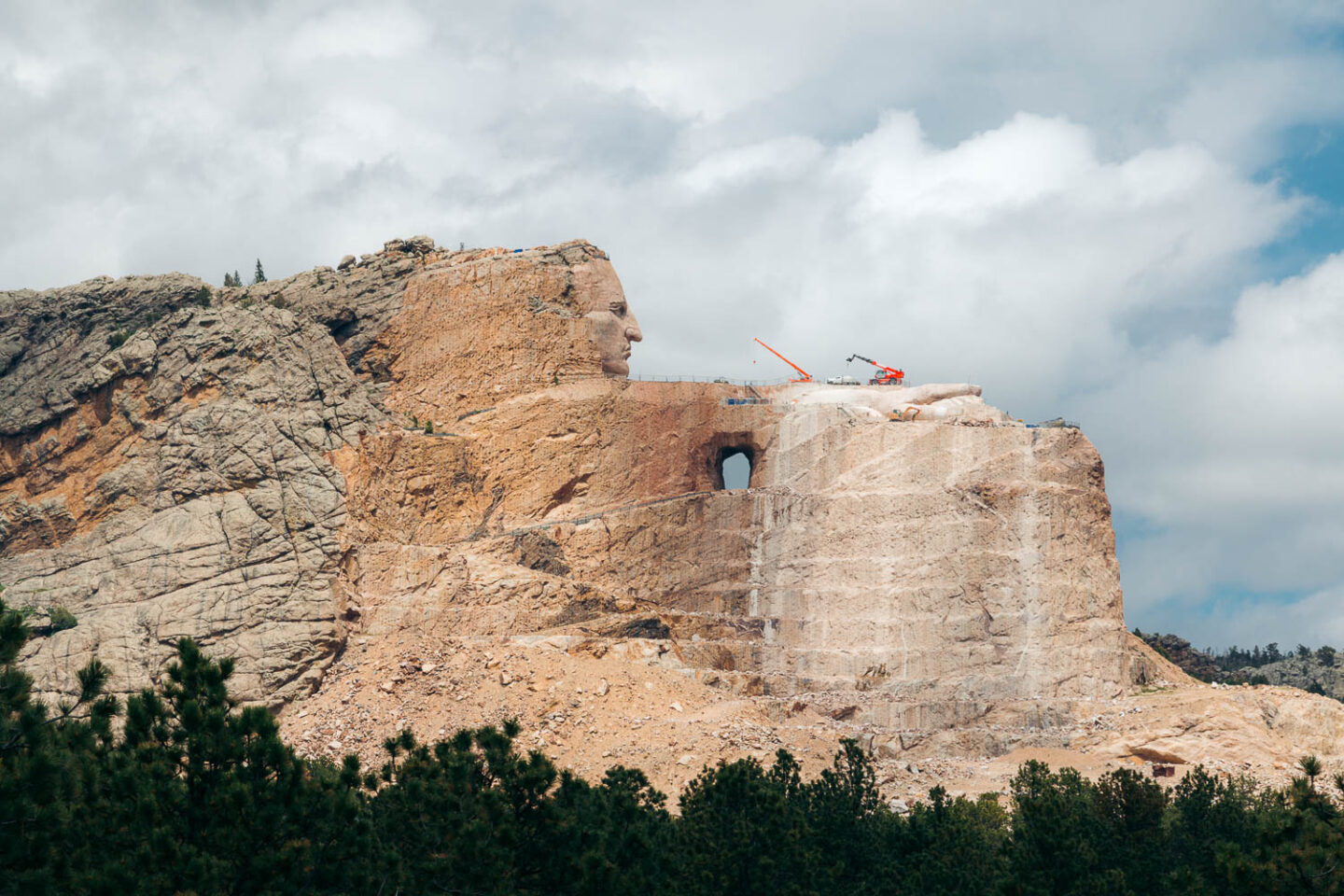
Work in Progress
The sculptor died in 1982. He was buried in a tomb that he and his sons blasted from a rock outcropping at the base of the mount.
Korczak didn’t live to see the mountain take the recognizable shape of the face of the fearless Crazy Horse, a part of the monument that was completed in 1998. But any progress was possible only because of the detailed plans and proportions of the sculpture that the artist left behind.
Korczak’s wife, Ruth Ross, (died in 2014) and children have been working on the massive project since the sculptor’s death. Crazy Horse Memorial is projected to be finished by 2035. Considering that only the granite face of the Lakota warrior towers over the land where his “dead lie buried”, it’s a long shot, though.
Visit Crazy Horse Memorial Today
Today Crazy Horse Memorial is more than just the mountain carving and the mountain work area. Admission to Crazy Horse Memorial includes access to the Indian Museum of North America, the Native American Education and Cultural Center, and Sculptor Home and Studio.
In the Welcome Center you can watch an orientation film, a short documentary that narrates about the lives of the two heroes of Crazy Horse Memorial: the warrior who represents the spirit of the Lakota people and a sculptor who devoted his life to this project.
On the veranda, to the right, guests of the Memorial can enjoy traditional Native American dancing. This cultural programming is presented a few times a day from late May through late September.
At the far end of the veranda and along the wall of windows located at the rear exit of the theater stunning views of the Crazy Horse sculpture open up.
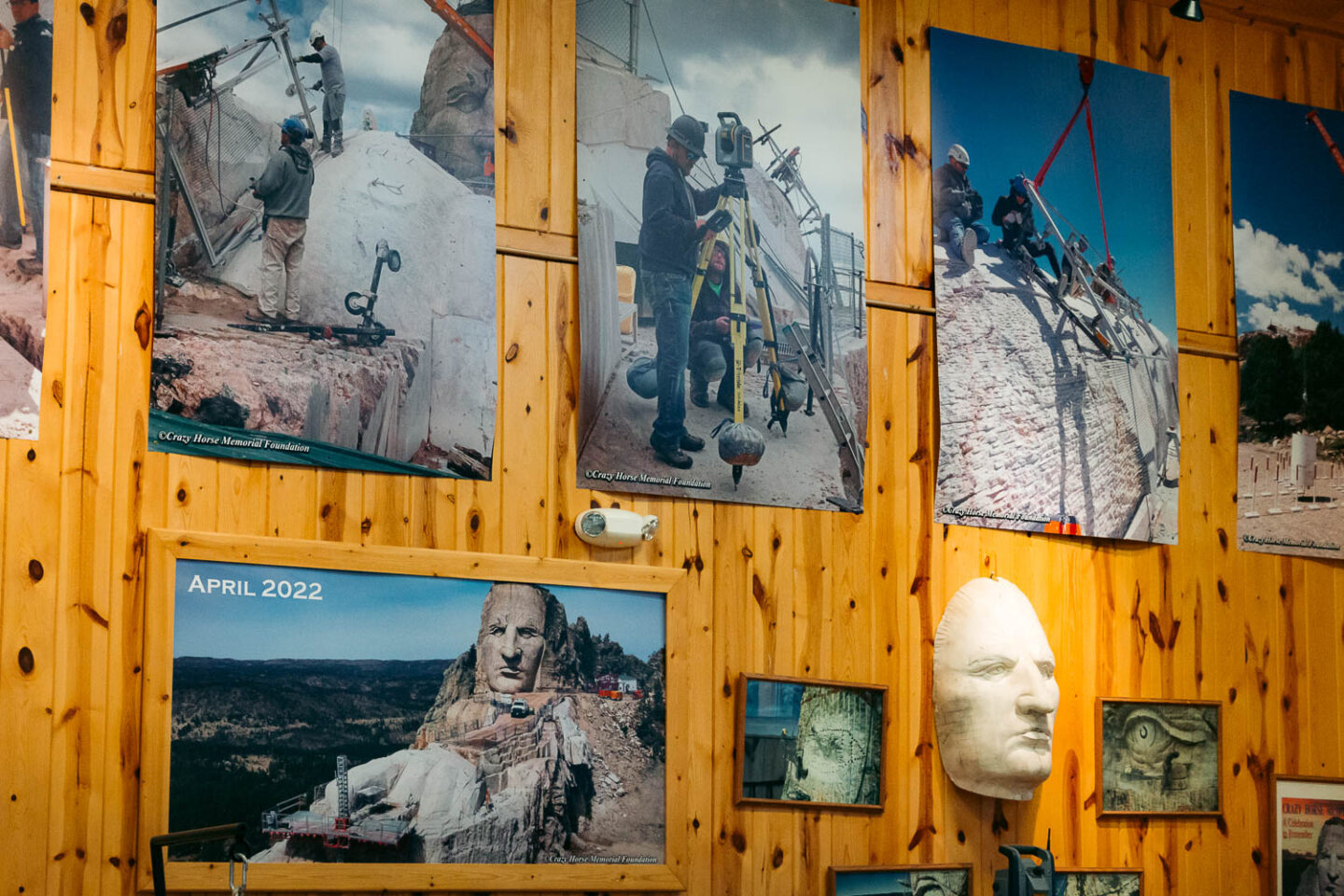
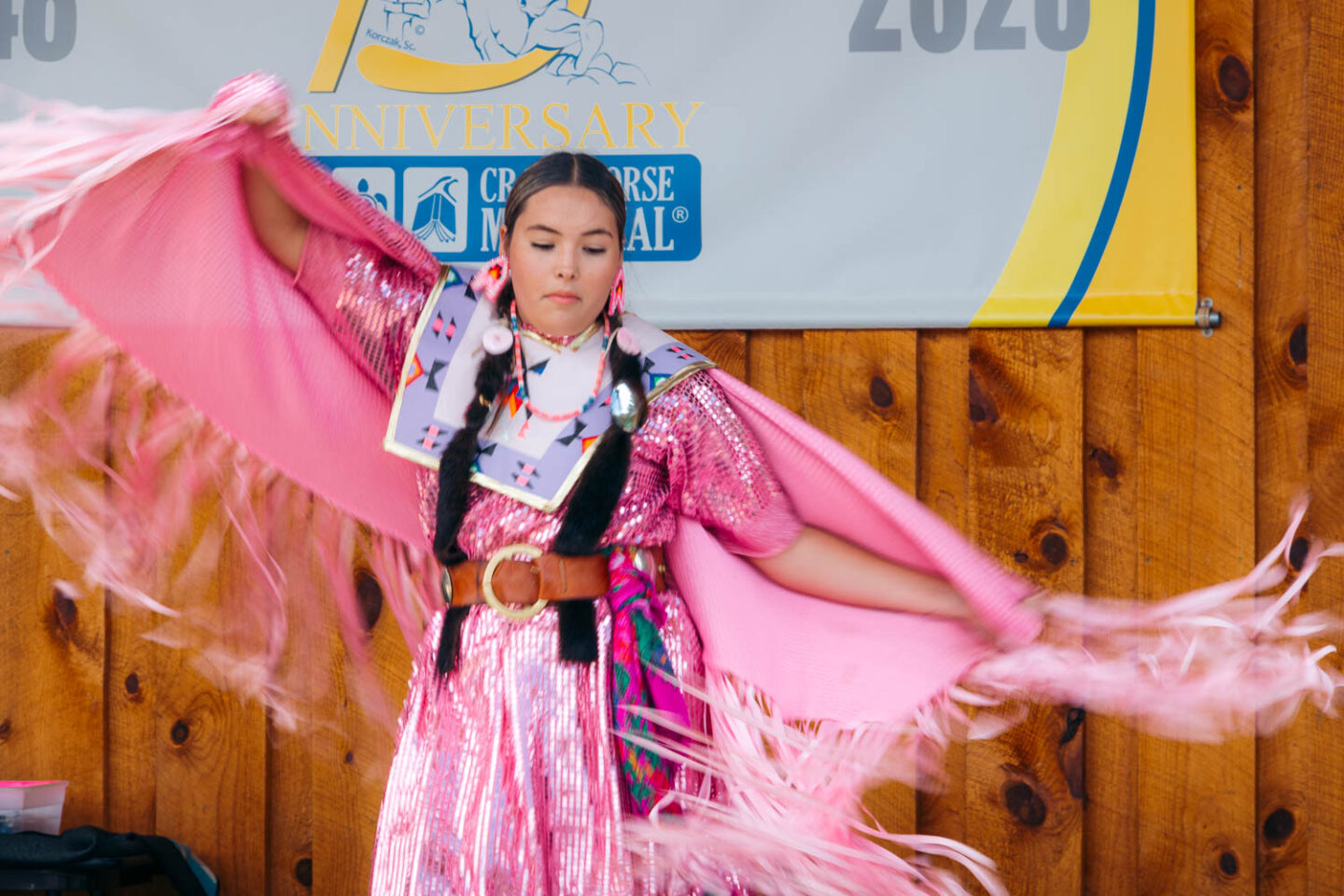
Get Closer to Crazy Horse Mountain
The Welcome Center is located 3/4 mile away from the mountain carving where the mountain crew works year-round. Shuttle buses take the visitors to the bottom of the mountain. The ride is $5. The tours, however, can stop unannounced when the weather in the Black Hills changes.
Lighting was expected on an early afternoon in June when we visited Crazy Horse Memorial. We waited outside, by the shuttle booth, eager to board one of the tour coaches and get closer to the Crazy Horse Mountain. A staff member confirmed that the buses would resume their services later that day. But when? Nobody could answer this question…
We saw lightning flashing over the mountains about an hour later. The sun came out shortly after. We didn’t get to see Crazy Horse up-close, though. Yet now approaching Mount Rushmore, home to another remarkable mountain sculpture, we didn’t have any regrets. Some places ought to remain mysterious, incomplete, and be admired from a distance.
Admission
Crazy Horse Memorial continues to fully sustain itself through admissions and private donations. The Memorial experiences a high volume of visitors between Memorial Day through the end of September. During this time, the admission prices vary from $10 to $35. During the non-peak season, the prices range between $7 and $30.
Places to Visit near Crazy Horse Memorial
- Custer State Park (36 minutes away Crazy Horse)
- Mount Rushmore National Memorial (28 minutes away)
- Badlands National Park (1 hour 45 minutes away)
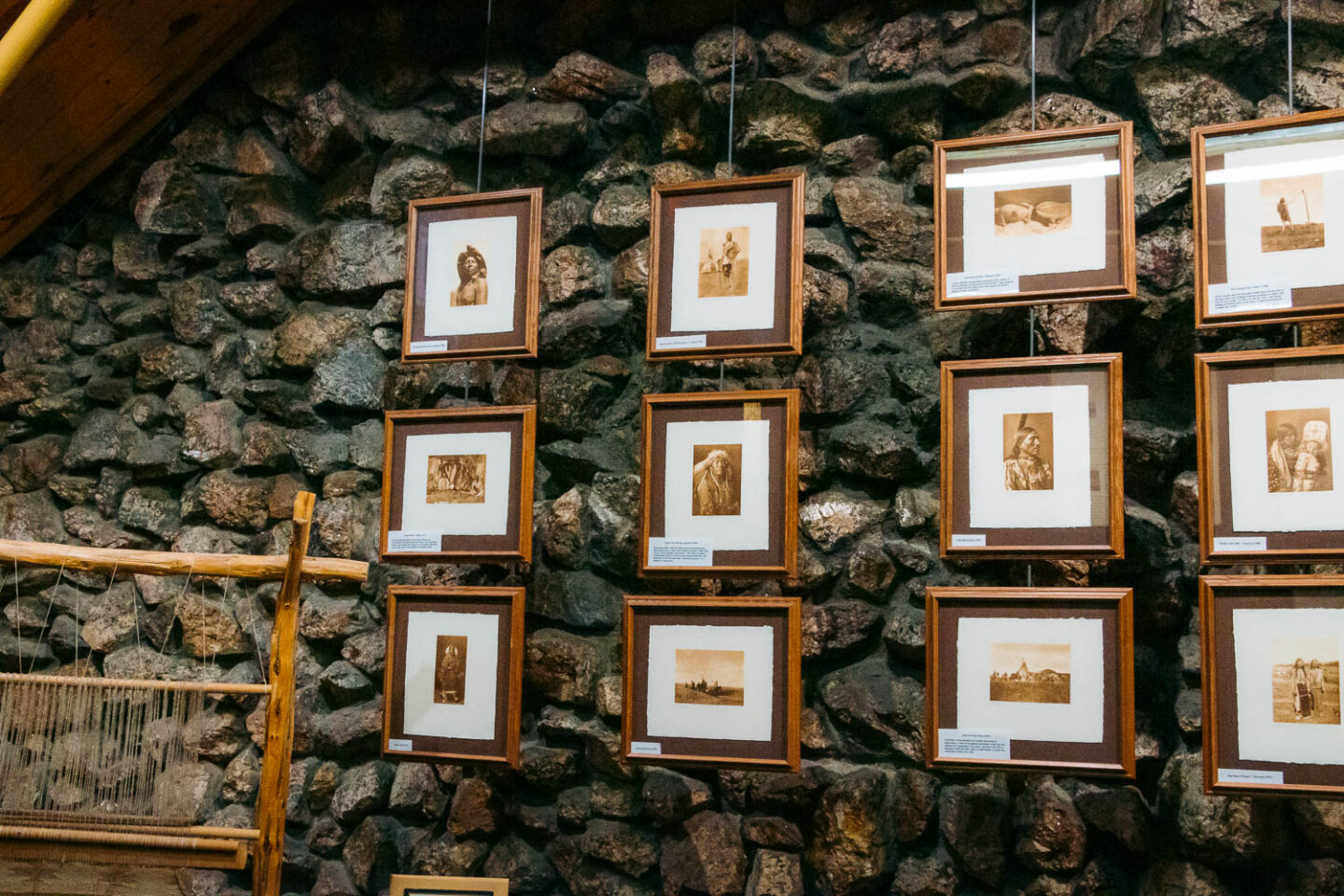
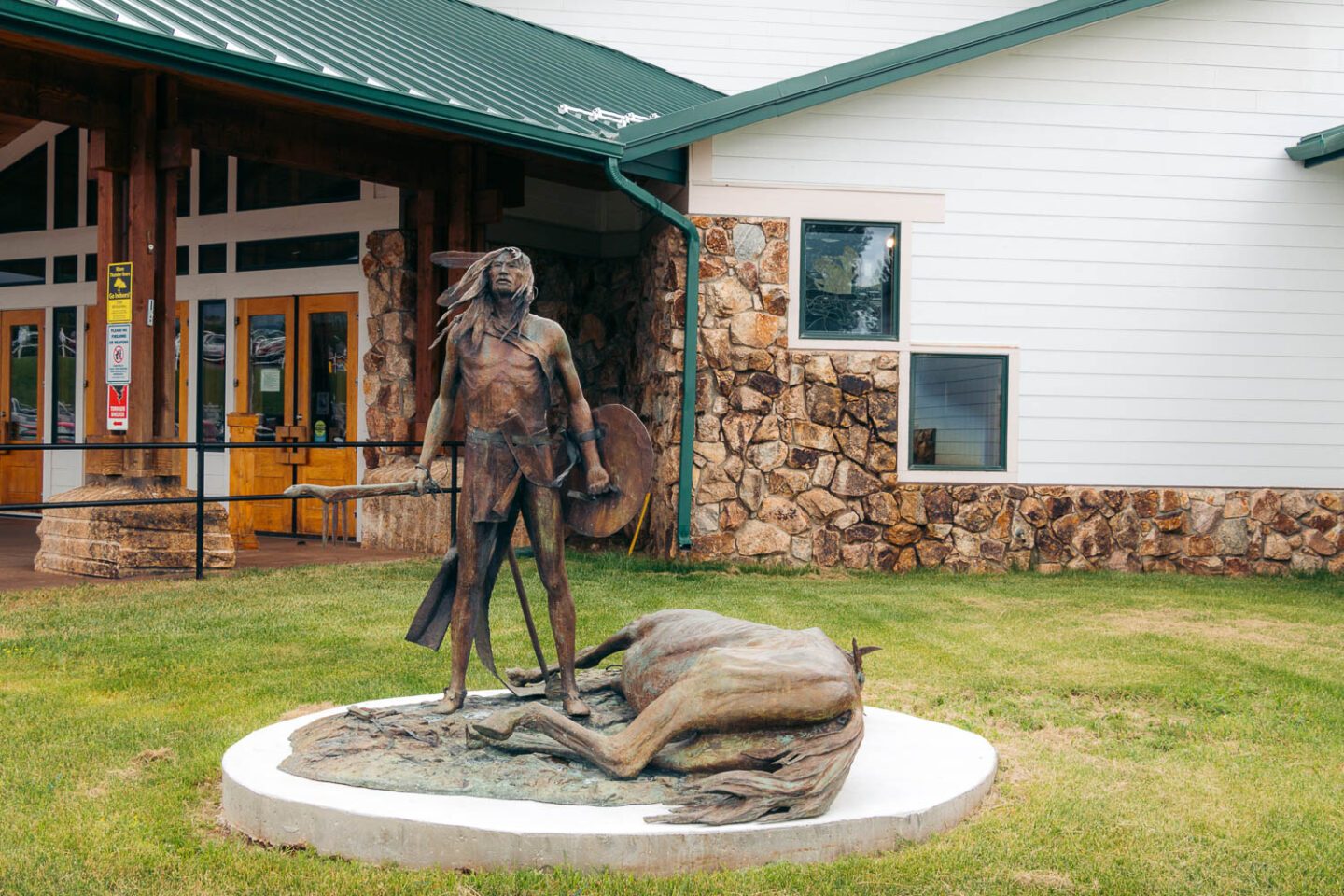
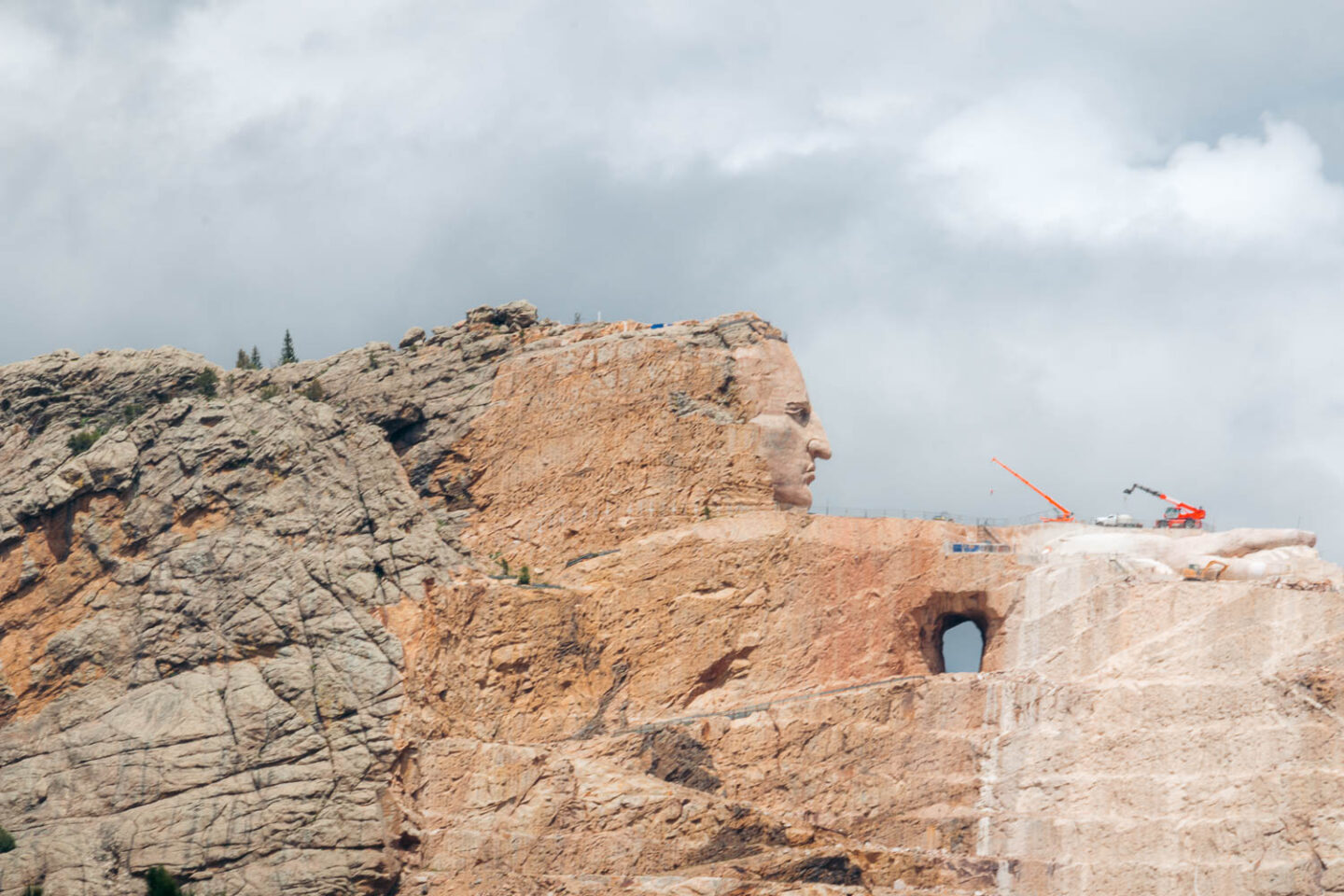
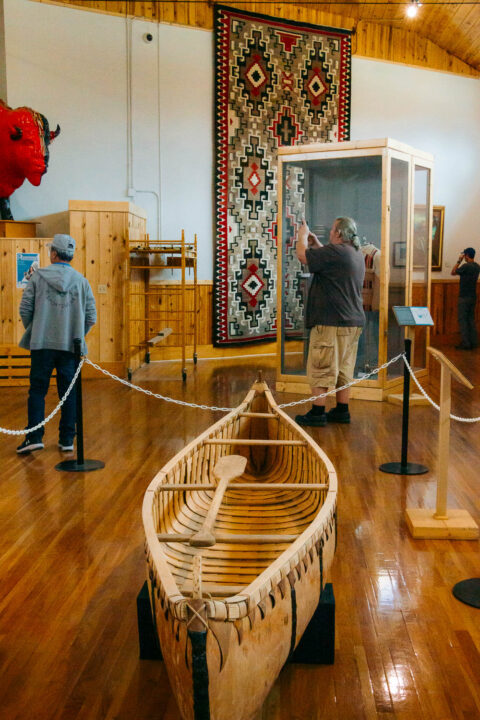
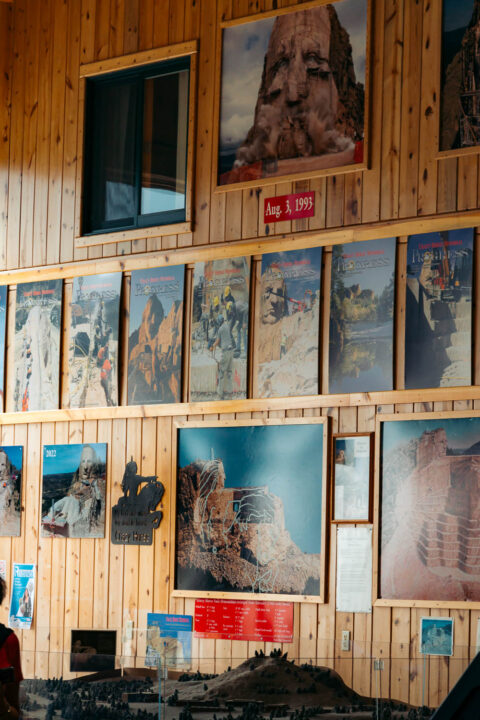
A very moving place love it
Author
Indeed.